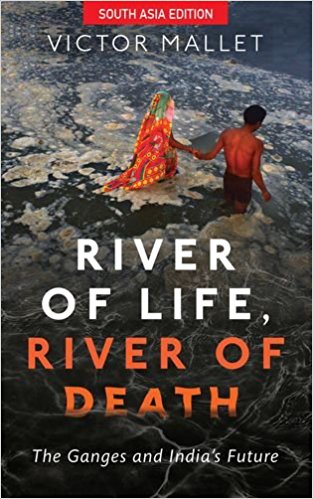Victor Mallet is the latest in a string of visitors over the centuries who have evocatively recorded their fascination for the Ganges: from Xuanzang, in the 7th century, who was in raptures of its waters, ‘dark blue in colour with great waves rising’; J.A. Hodgson, the first outsider to reach the Gaumukh glacier, who saluted with a bugle march the first appearance of the great river; and Fanny Parkes, the 19th century diarist, who was charmed by everything she saw as she sailed up the river in a flotilla of vessels; to, more recently, Eric Newby, who meandered slowly down the Ganges on a makeshift craft, Sir Edmund Hillary who jet-boated up it, and Dennison Berwick who trudged on foot from its mouth to its source. While retaining the enthralment that the river unfailingly asserts, Mallet’s is arguably the best-researched, and most disquieting, of all the first-person accounts about the Ganges. Having trekked up to Gaumukh, immersed himself in the river during the Kumbh Mela, and participated in the annual gathering at Ganga Sagar, besides exploring the historic cities on its banks, Mallet cannot help venting his anguish and despondency at the present plight of the Ganges which, he warns, poses a threat to the wider Indian population. ‘The conclusions of official measurements, academic papers and the evidence of one’s own eyes’, he points out, ‘are alarming for anyone who cares about human health or the environment.’
The Ganges is worshipped and is entwined with myth and legend as no other river has been; it has provided for the agricultural, industrial and drinking water needs of half a billion people; but what survives at its extremity is grievously tainted by faecal germs and infectious bacteria, industrial chemicals and pesticide residues. Standing at the junction where the river meets the sea, Mallet reflects: ‘The pure water melted from the glacier at Gaumukh has by this point been subjected to all the follies and wonders of India.’

